


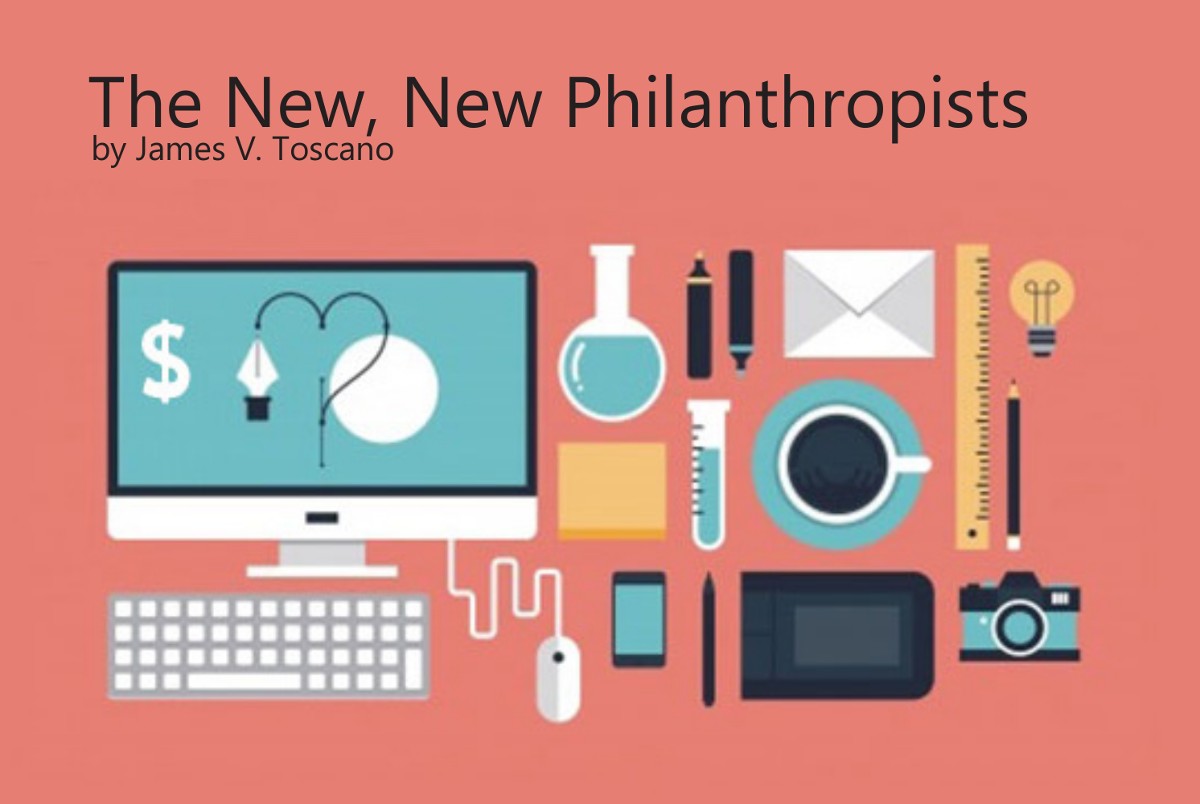
There is an emerging style of philanthropy that will not accept anything but solutions and cures. Gradually it will constitute a significant element in the way society allocates charitable resources.
This new philanthropy is characterized by impatience, empiricism, and calculated risk—contradictory yet persistent aspects displayed by a new breed of donors. The division between for- and non-profit, the idea of tax deductibility, and public recognition of donations all seem to be losing importance.
This movement sees its contributions as investments, not charity. Societal return is the object. Is it philanthropy, or is it something else? Does it matter what we call it if it becomes a vital, dynamic force in societal change? In the truest meaning of the word, these individuals are philanthropists.
What is all-important is pushing the envelope, not accepting the status quo, and positive impact on the overall society.
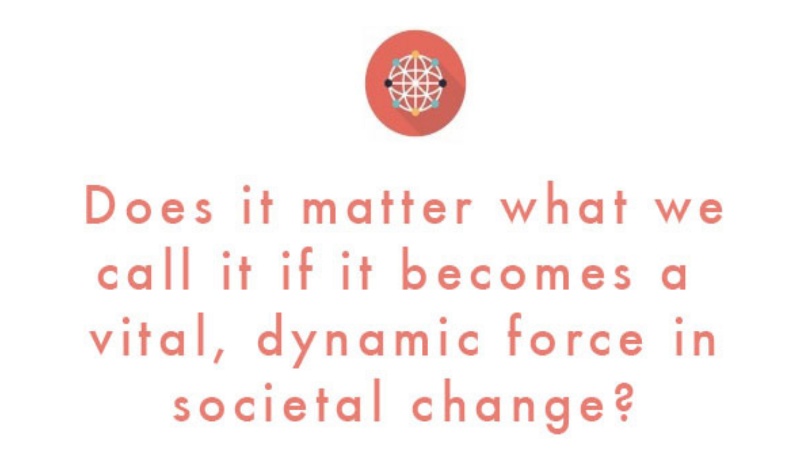
Traditional Philanthropy Is Slowing
With traditional philanthropy plateaued, perhaps even receding, it is this source of energy to which many will direct their focus for the resources needed to fuel the nonprofit sector and beyond.
The most recent survey of nonprofit organizations reports traditional methods of fundraising failing: three-quarters of new gifts are not repeated. Overall, retention of all donors from year to year has sunk to 39 percent.
The new philanthropists are really not interested in the same-old, same-old. For four decades, traditional philanthropy has constituted two percent of the GDP. These new minds know that four to five percent is needed, and they have a method for determining where to increase investments in society.
Generational differences, conceptual and methodological developments, different expectations, even the sources of wealth are motivating this change in the way we contribute time, money, and other resources.
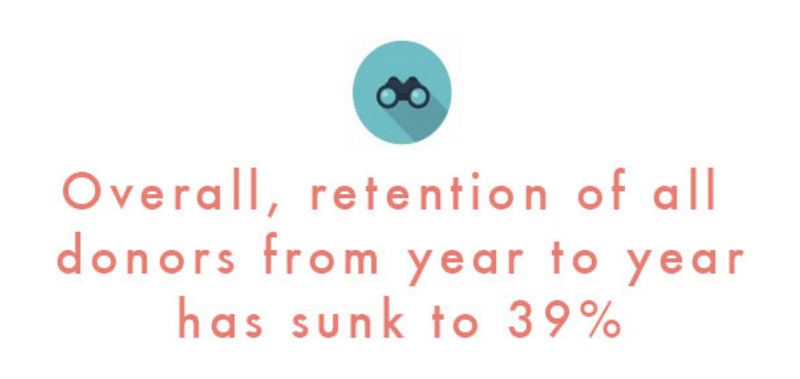
The March to Measurement
Central to decision-making is measurement. For example, the Edna McConnell Clark Foundation’s David Hunter influenced foundations to seriously employ metrics in evaluations of proposals and nonprofits in managing to measurable outcomes.
Heavily influenced by the empiricism of hedge funds, leadership of the Robin Hood Foundation has pushed sophisticated metrics. To determine return on their charitable investments, now over $1 billion, the Foundation methodology monetizes all potential outcomes of their grants. This allows comparative evaluation and a system of counterfactuals, what would happen if no investment were made, gives credibility to the discipline used.
Robin Hood requires its recipients to be nonprofit organizations. Others are moving in a direction where the distinction between the nonprofit and the for-profit organization doesn’t matter.
Obliterating Boundaries

This newest attempt crosses, really obliterates boundaries between for-profit and nonprofit organizations, utilizing the strengths of both.
Entrepreneurial in spirit, bottom line and success oriented in methodology, disciplined in its choices, yet value-oriented in its mission, the new philanthropy seeks to solve problems, not merely to reduce or ameliorate them.
The greatest of all these challenges nationally and internationally is the growing inequality of income and total resources available to individuals.
The new philanthropists are beginning to focus on this problem, with a solution that principally focuses on a model of wealth creation and the promotion of social mobility.
In the past, attempts to reduce inequality have been piecemeal, especially when human beings are parsed into a variety of nonprofit and government services, assistances, and subsidies. Progress has been made, yet the number of poor here and abroad continues to increase.
Attempts at government intervention through aggressive taxation have largely failed, as have the inflating power of printing more money.
These government measures may have helped stop temporary dysfunctions but have not brought longer-term relief or, more important, solved the root of the problems.
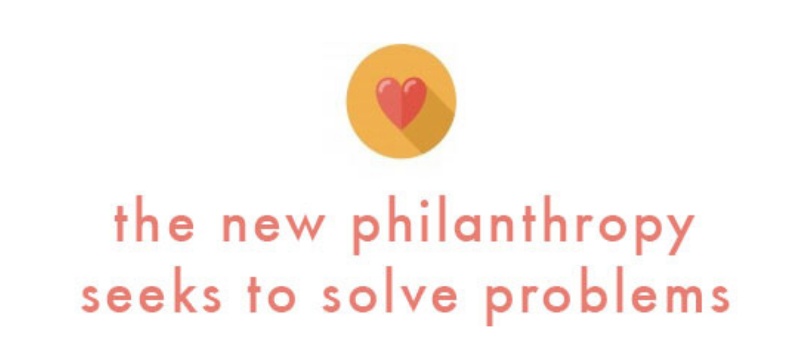
Beginnings
The idea of philanthropic assistance in creating wealth is not new. Just look at the worldwide phenomenon of microloans, which have indeed promoted independence, employment, and wealth.
The difference now is that wealth creation is becoming the significant driver among those new philanthropists who value increasing social mobility, using their resources to achieve this important aspect of the American Dream.
The new philanthropists envision funding going beyond grants and loans to a new focus on investments in nonprofits, for-profits and any combination for solutions, for cures. They use rigorous metrics, leverage of all types, and intensive due diligence to find their philanthropic investment targets.
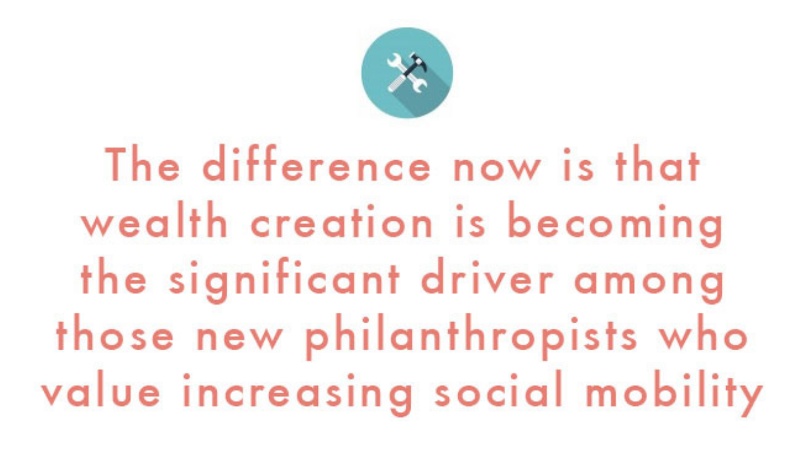
The Creation Of Wealth
Their targets for investment have high promise to create wealth not only for individuals but for communities, the groups that produce high-paying, long-term jobs for many currently under- and unemployed.
The existence of a grocery store in a poor neighborhood is a well-known engine to produce other economic development. Yet most blighted areas lack such stores. And if such a store is introduced, failure is often the outcome, given all of the missing elements to make a grocery store succeed.
To address the grocery story dilemma, a group is seeking to create a start-up in a neighborhood that raises fish and uses the fish water to grow hydroponic vegetables and herbs, providing communities with both nutritious food and jobs. Salaries are multipliers for economic growth. High quality food produces stronger and healthier children and adults. The downward spiral is reversed!
This new philanthropy focuses on emerging societal trends: the digital, the green, and the quality movements all around us. Nevertheless, two conventional areas needing vast new resources—the rebuilding of infrastructure and the capacity problems of health care— will need the same innovative solutions as the new and emerging areas of economic growth.
Opportunity Abounds
Opportunity abounds and the potential for wealth creation is enormous. Just think of an idea in a college dorm, develop the concept, go through rigorous due diligence, receive funding, and a new Facebook may be born.
Or an idea growing out of a public housing project that develops into a profitable ethnic restaurant at the new football stadium employing inner city workers is financed. How many more innovations and start-ups are created through this new philanthropy depends on how the ideas embodied in this approach catch on with increasing numbers of nontraditional donor/investors.
We need much more philanthropic investment if any of our ambitions to reduce inequality or to solve a myriad of other problems are to happen. And the new philanthropy may provide these resources.

Where will this come from? First remember that we are talking about grants, loans, and investments. If we create wealth, those beneficiaries may repay earlier grant funds to the source, or repay a loan with reasonable interest, declare dividends on investments, or return high yields on original investment equity.
One way to do this is for new philanthropists to come together and contribute to an impact fund that combines their values and their rigorous methodology. Community foundations may be the perfect place to start these funds. Through impact grants and loans, the fund can leverage bank loans, buy down mortgage points, capitalize initial efforts, and generally supply the start-up funds for a new innovation, a solution to a long-standing problem, or a cure for societal dysfunctions.
Starting The Fund
 The impact fund will start with individuals of high net worth and farsighted foundations capitalizing the initial effort. However, anyone can contribute, loan money, or invest in this effort. For example, individuals with donor-directed funds can make grants to the fund, allow program related loans, and invest a small percentage of their corpus (say, five percent) in the fund.
The impact fund will start with individuals of high net worth and farsighted foundations capitalizing the initial effort. However, anyone can contribute, loan money, or invest in this effort. For example, individuals with donor-directed funds can make grants to the fund, allow program related loans, and invest a small percentage of their corpus (say, five percent) in the fund.
Mutual funds and other investment houses already offer socially responsible funds that cover part of this territory but do not go to new combinations of groups, to highly adventurous ideas, or to nonprofits with entrepreneurial subsidiaries.
Eventually, anyone with an investment can place a percentage of their corpus in impact philanthropy funds— funds that seek not only entrepreneurial reward but also overall societal benefit.
Just think of a percentage of the endowment funds in foundations that might find their way into reasonable and responsible investments in these impact funds, given the foundations’ missions. Why just use the earnings of the endowment? Use the endowments themselves.
Is there risk? Not risk, risks. Many. And rewards. More than can ever be achieved without this new approach—the very real creation of wealth across a spectrum of diverse ideas, industries, communities, and individuals.
We need new blood in the philanthropic system. We certainly need more funds. We need new ideas. We need societal venture funds. We need new ways of philanthropic investing. We need new metrics. We really need these new, new philanthropists.